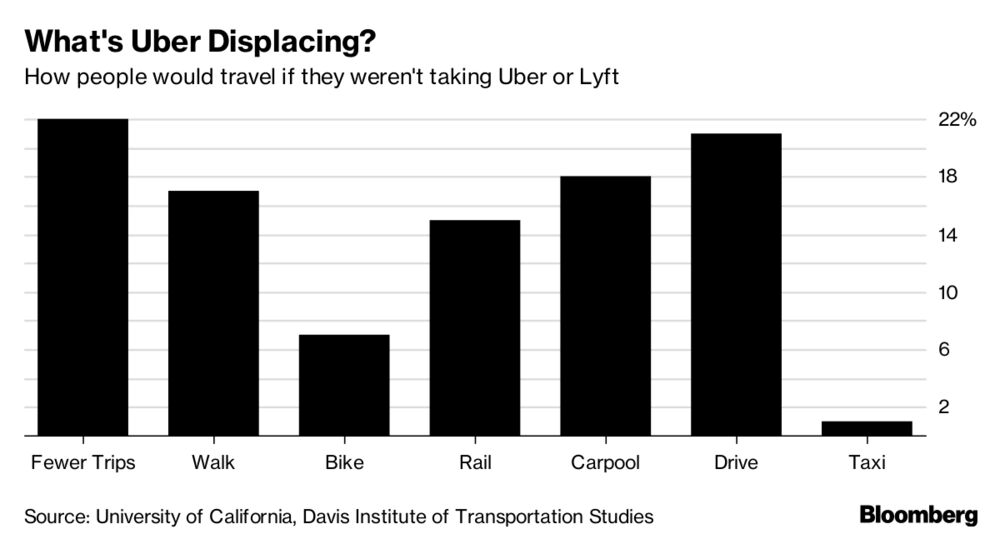Self-Driving Cars Will Kill Things You Love (And a Few You Hate)
Get ready for the long goodbye to car culture, many domestic flights, and insurance premiums.
By Jess Shankleman
February 13, 2018, 2:23 AM EST
Electric cars, robo taxis and self-driving trucks are coming to change the society we live in—possibly sooner than you think.
Limited tests of driverless cars are already happening today and they’ll be in use everywhere within six years, according to Carlos Ghosn, CEO of the Renault Nissan Alliance. A change on that scale would reach far beyond the automotive industry to upend businesses, transform our daily lifestyles and reshape cities.
Even if the skeptics are right and the technology necessary for full level-five autonomy develops more slowly, the revolution could still claim many victims.
Bikes and Buses In a future where anyone is able to summon a cheap driverless pod at the click of a smartphone button, the line between public and private transport would start to blur.

Ride hailing services such as Uber Technologies Inc. and Lyft Inc. are already reducing demand for public transport across the U.S., according to a study from the University of California, Davis. People use ride hailing apps instead of taking the train, driving, cycling or even walking.
Removing human drivers from the equation could make those services even more affordable and convenient compared with trains or buses following fixed routes. Dwindling passenger numbers could ultimately starve public transit of investment.
Domestic AirlinesIn the U.S. people often fly between or even within states, but autonomous technology could make car journeys a more pleasant and productive alternative. The impact could be similar to Japan’s bullet trains, which diverted passengers away from airlines.
“Air travel in North America isn’t really good—the airports suck, the airlines are horrible,” said Ali Izadi-Najafabadi, an intelligent mobility analyst at Bloomberg New Energy Finance. “In a driverless car you could read a book, watch a movie and do other fun stuff.”
Insurance Premiums Today more than 90 percent of road accidents are caused by human error, so once you take people out of the equation safety will probably improve, said David Williams, technical director at insurer AXA SA.

Initially, there could be two types of insurance—one for manual cars and one for autonomous—with premiums for the latter eventually falling as much as 50 percent, Williams said.
Car CultureTailgate parties, political bumper stickers, bored teenagers cruising the byways of small towns—all these could become things of the past as cars change from prized possessions to on-demand utilities.

Fewer young people are already learning to drive in the U.S., citing the cost of owning a car and ability to share rides as key reasons, according to a study by the University of Michigan. If that generation eventually loses the need to drive altogether, the link between American popular culture and car ownership will wither.
“We as Americans associate our identity with our car,” said Doug Seven, who leads Microsoft’s connected and driverless car efforts. “When the 20 year-olds become the 40 year-olds and the 40 year-olds become the 60 year-olds, the cultures will shift.”
Traffic Jams
Cloud-connected vehicles with advanced computer brains won’t just drive themselves, they’ll be able to communicate with other cars, traffic signals or emergency services. Even if the number of cars on the road increases, these systems could speed up city traffic and reduce jams by rerouting flows away from accidents or repricing toll routes. They might also curb the daily rush hour by allowing employers and local governments to encourage more flexible working hours.
"You would want to spread things out from 9 o’clock on the dot and 5 o’clock on the dot,” said Benedict Evans, a partner at Andreessen Horowitz, in an interview. “Driverless cars give you a lot of the tools to do that.”
continues at bloomberg.com |







